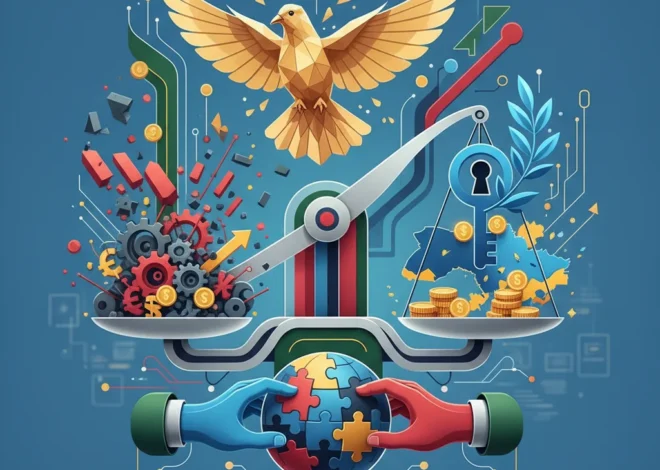
UK Economic Barometer Flashes Red: Why a Dip in Consumer Confidence is a Major Warning Sign
The Canary in the Coal Mine: Why a Slump in UK Consumer Confidence Matters to Everyone
In the complex world of economics and finance, sentiment is a powerful, often underestimated, force. While analysts pour over GDP figures and inflation rates, the collective mood of a nation—its optimism or pessimism—can be the real driver of economic momentum. Recently, a crucial barometer of this mood, the GfK Consumer Confidence Index, flashed a warning sign. After a promising start to the year, UK consumer confidence has dipped, revealing a deep-seated anxiety that persists despite easing inflation. Households are growing more pessimistic about their own financial futures and the country’s broader economic outlook, a sentiment that casts a long shadow over the upcoming UK Budget.
This isn’t just a headline for economists; it’s a critical piece of intelligence for investors, a strategic consideration for business leaders, and a sobering reality check for households. The drop, though seemingly minor, reverses some of the hard-won gains from January and signals that the cost of living crisis is far from over. It suggests that the path to economic recovery will be a bumpy one, heavily influenced by the psychological scars of recent financial turmoil. As we stand at this crossroads, with a technical recession confirmed and a pivotal Budget on the horizon, understanding the nuances of this confidence slump is essential for navigating the uncertain waters of the UK economy.
Dissecting the Data: A Deeper Dive into the Numbers
To truly grasp the situation, we need to look beyond the headline figure. The overall GfK index fell by two points to minus 21 in February, a notable retreat from January’s 19-month high (source). The real story, however, lies in the components of the index, which paint a detailed picture of household anxiety.
The following table breaks down the key metrics from the latest report and what they signify for the broader economy:
| Confidence Metric | February Figure | Point Change (from Jan) | What It Signifies |
|---|---|---|---|
| Overall Confidence Index | -21 | -2 | A general increase in pessimism, reversing recent positive momentum. |
| Personal Financial Situation (Next 12 Months) | -2 | -2 | Households are less optimistic about their own financial health, impacting spending and savings decisions. |
| General Economic Situation (Next 12 Months) | -26 | -5 | A significant drop in faith in the UK’s overall economic trajectory, which can deter investment and hiring. |
| Major Purchase Index | -25 | -5 | A sharp decline in willingness to buy big-ticket items (cars, furniture, holidays), a direct threat to retail and manufacturing sectors. |
The five-point drops in both the general economic outlook and the Major Purchase Index are particularly alarming. The first indicates that the recent news of a technical recession has cut through and is shaping public perception. For those involved in the stock market, this is a red flag for UK-focused equities. The second, the Major Purchase Index, is a direct measure of discretionary spending intent. When this number plummets, it signals that consumers are closing their wallets for anything non-essential, a trend that could ripple through the retail, automotive, and hospitality industries with devastating effect. As Joe Staton, a director at GfK, noted, “This dip… underlines that the cost of living crisis is still a day-to-day reality for all of us” in his analysis.
The Trillion-Dollar Question: How European Courts Are Reshaping the Future of Energy Investing
The Macro Headwinds: A Perfect Storm of Economic Pressure
This decline in confidence isn’t happening in isolation. It’s a rational response to a confluence of powerful economic headwinds that are battering UK households and businesses.
1. The Reality of Recession
The UK economy slipped into a technical recession in the latter half of 2023. While some economists argue it’s a shallow downturn, the label itself has a potent psychological impact. It confirms the feeling that things are getting worse, not better, and encourages defensive financial behaviour like hoarding cash and delaying investments.
2. The Squeeze of High Interest Rates
The Bank of England’s fight against inflation has come at a cost. Higher interest rates have significantly increased mortgage payments for millions of homeowners and raised the cost of borrowing for businesses. This monetary tightening directly impacts disposable income, leaving less room for spending and contributing to the pessimism seen in the GfK survey. The entire banking sector is navigating this delicate balance between managing inflation and avoiding a credit crunch.
3. The Illusion of Falling Inflation
While the headline inflation rate has fallen from its peak, this doesn’t mean prices are going down. It simply means they are rising more slowly. The cumulative effect of the past two years of price hikes means that the cost of a weekly shop, a tank of fuel, or a utility bill remains painfully high. This gap between the statistical “improvement” and the lived reality of household finance is a major source of public discontent.
While some experts, like Gabriella Dickens at Pantheon Macroeconomics, believe the February dip is a “blip” and that rising real incomes will soon boost spirits (source), the persistence of these headwinds suggests the path to recovery may be longer and more arduous than anticipated.
The European Paradox: Why Stronger Nations Might Build a Stronger Union
The Budget Tightrope: Navigating Political Promises and Economic Reality
All eyes now turn to the Chancellor’s Spring Budget on March 6th. The government is walking a perilous tightrope, balancing the political desire for pre-election tax cuts against the stark economic reality of high national debt and weak growth. The drop in consumer confidence only raises the stakes.
A significant tax cut could provide a short-term boost to sentiment and disposable income, but it comes with risks. If seen as fiscally irresponsible, it could spook the markets, push up government borrowing costs, and potentially complicate the Bank of England’s efforts to control inflation. Conversely, a fiscally prudent but “do-nothing” budget could be interpreted as a failure to address the ongoing cost of living pressures, further dampening consumer and business confidence.
This is where modern financial technology could play a future role. Governments globally are exploring how fintech innovations can create more efficient tax systems and better-targeted support. While not on the immediate agenda, concepts like leveraging real-time data for policy-making or exploring the transparency of blockchain for public spending highlight a future where fiscal policy could become more agile and responsive. For now, however, the Chancellor is armed with more traditional tools, and the choices made will have a profound impact on everything from individual investing portfolios to the national economic trajectory.
Actionable Insights: What This Means for You
Navigating this environment requires a clear-eyed strategy, whether you’re an investor, a business owner, or managing your own household budget.
- For Investors: Volatility is likely to persist. The dip in confidence, especially in the major purchase index, suggests that consumer-facing sectors (retail, hospitality, housebuilders) may face continued pressure. Diversification remains key. Investors engaged in active trading should be wary of sentiment-driven market swings and focus on companies with strong balance sheets and resilient earnings, capable of weathering a prolonged period of weak domestic demand.
- For Business Leaders: The message is one of caution. Businesses should prepare for subdued consumer spending, particularly on big-ticket items. This means a sharp focus on inventory management, operational efficiency, and strengthening value propositions. In a market where customers are highly price-sensitive, demonstrating clear value for money is paramount.
- For Individuals: The data confirms what many are feeling: financial prudence is essential. This is a time to review budgets, prioritise building or replenishing emergency funds, and delay non-essential major purchases if possible. Leveraging financial technology through budgeting apps and savings tools can provide greater control and clarity over personal finances.
Primal Finance: What Chimpanzee Behavior Teaches Us About Modern Investing
Conclusion: A Fragile Recovery on a Knife’s Edge
The recent fall in UK consumer confidence is more than just a data point; it’s a reflection of a nation holding its breath. It reveals an economy where the foundations of recovery are fragile, and public sentiment is balanced on a knife’s edge. The optimism of January has given way to the anxieties of February, serving as a stark reminder that the journey out of the cost of living crisis is not a straight line.
As the government prepares to deliver a critical Budget, it must address not only the fiscal numbers but also this crisis of confidence. The decisions made in the coming weeks will send a powerful signal about the future direction of the UK economy, influencing investment decisions, business strategies, and the financial well-being of millions. For now, the message from the British public is clear: the storm has not yet passed, and they are battening down the hatches for whatever comes next.


